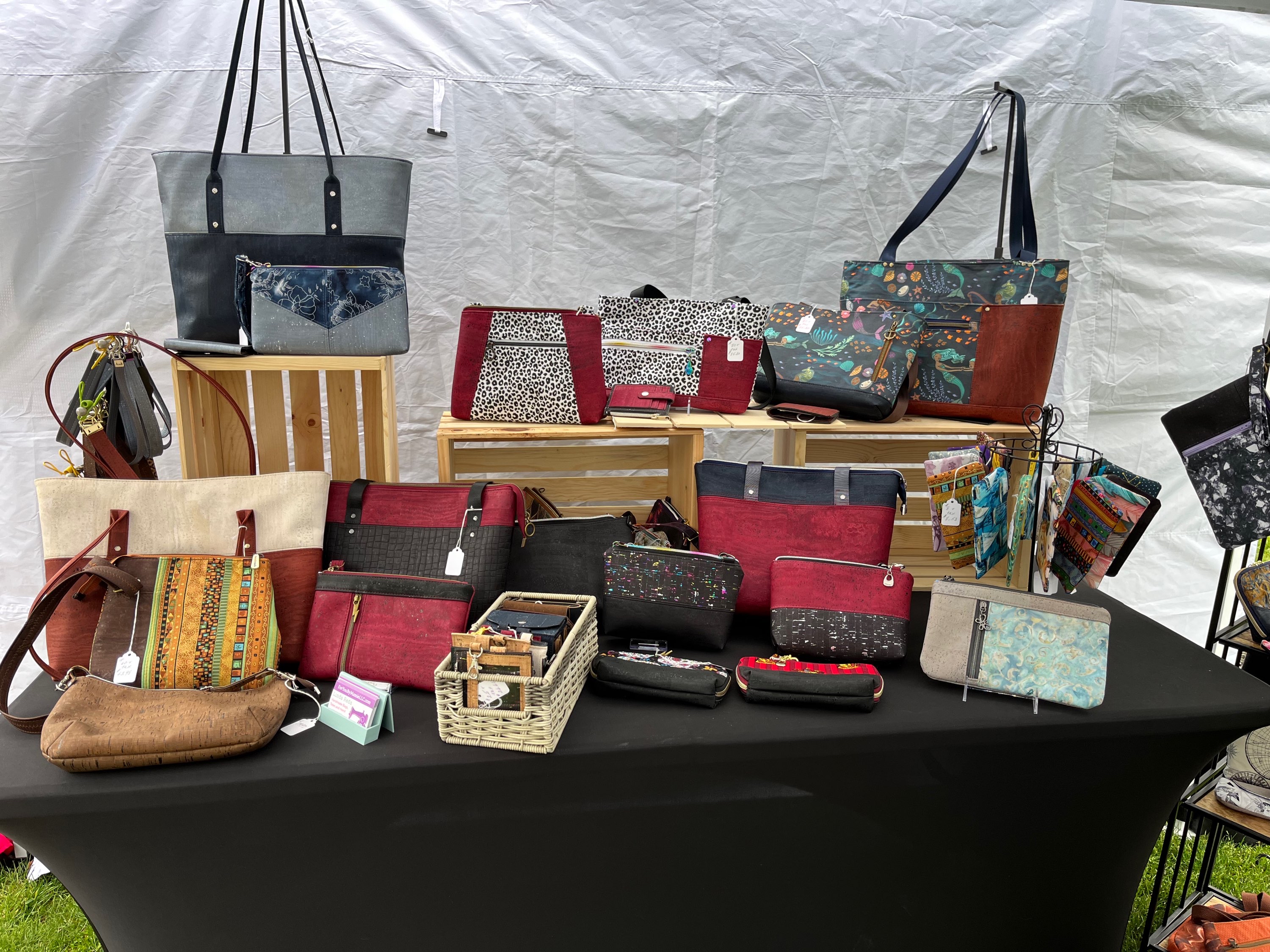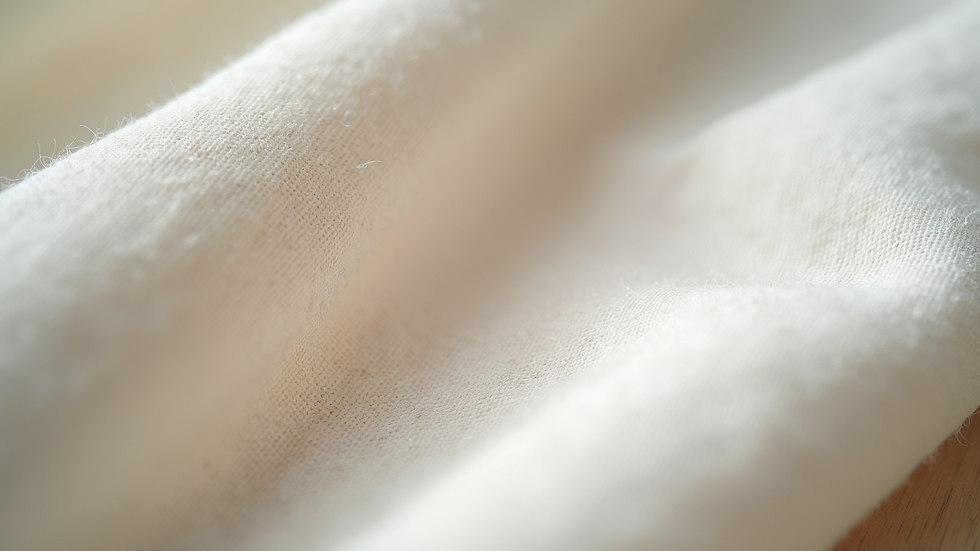Eco-Friendly Fabrics That Transform Fashion
- foryoubymamiellc

- Oct 7
- 4 min read
When I first started diving into the world of sustainable fashion materials, I was amazed at how much impact our fabric choices have on the planet. It’s not just about looking good anymore; it’s about feeling good about what we wear and how it affects the environment. Today, I want to take you on a journey through some of the most exciting eco-friendly fabrics that are changing the fashion game. These materials don’t just reduce waste and pollution—they also bring fresh textures, colors, and stories to our wardrobes.
Let’s explore how these sustainable fashion materials can transform your closet and help us all make better choices for the planet.
Why Sustainable Fashion Materials Matter
You might wonder, why should we care so much about the fabrics in our clothes? Well, the fashion industry is one of the biggest polluters worldwide. From water usage to chemical dyes, the environmental footprint is huge. That’s why switching to sustainable fashion materials is a powerful way to reduce harm.
Sustainable fabrics are made with the planet in mind. They often use less water, avoid toxic chemicals, and come from renewable or recycled sources. Plus, many of these materials are biodegradable or recyclable, which means they don’t stick around in landfills for centuries.
Here are some key benefits of choosing sustainable fashion materials:
Lower environmental impact: Less water, energy, and chemicals used.
Better for your skin: Often free from harsh dyes and treatments.
Supports ethical practices: Many sustainable fabrics come from fair-trade or small-scale producers.
Unique textures and styles: Natural fibers bring a fresh look and feel.
By embracing these fabrics, we’re not just changing what we wear—we’re changing the future of fashion.

Top Sustainable Fashion Materials You Should Know
Let’s get into the heart of it: the fabrics themselves. Here are some of my favorite sustainable fashion materials that you can find in stores or even try making your own clothes with.
Organic Cotton
Organic cotton is grown without synthetic pesticides or fertilizers. This means it’s gentler on the soil and safer for farmers. It also uses less water than conventional cotton. The fabric feels soft and breathable, perfect for everyday wear.
Hemp
Hemp is a powerhouse fabric. It grows quickly, requires minimal water, and enriches the soil. Hemp fabric is strong, durable, and becomes softer with each wash. It’s great for jeans, jackets, and even accessories.
Tencel (Lyocell)
Tencel is made from sustainably harvested wood pulp, usually eucalyptus trees. The production process recycles water and uses non-toxic solvents. Tencel fabric is silky, breathable, and biodegradable. It’s a fantastic alternative to synthetic fibers.
Linen
Linen comes from the flax plant and is one of the oldest textiles in the world. It’s naturally biodegradable and requires fewer pesticides and water than cotton. Linen’s crisp texture and cool feel make it ideal for warm weather.
Recycled Fabrics
Recycled polyester and nylon are made from post-consumer plastic bottles or fishing nets. Using recycled materials helps reduce plastic waste and lowers the demand for virgin petroleum-based fibers. These fabrics are often blended with natural fibers for comfort.
If you want to dive deeper into the world of environmentally friendly fabrics, there are plenty of resources and brands dedicated to making sustainable fashion accessible and stylish.

What Fabric Has the Lowest Carbon Footprint?
This is a question I get asked a lot. When we talk about carbon footprints, we’re looking at the total greenhouse gas emissions from growing, processing, and transporting the fabric.
Among natural fibers, hemp and linen usually have the lowest carbon footprints. They grow quickly, need little water, and don’t require heavy chemical inputs. Hemp, in particular, absorbs a lot of CO2 while growing, which helps offset emissions.
Organic cotton is better than conventional cotton but still uses more water and energy compared to hemp or linen. Tencel is also a strong contender because of its closed-loop production process that recycles solvents and water.
Recycled fabrics like recycled polyester have a lower carbon footprint than virgin polyester, but they still rely on fossil fuels. So, if you want to minimize your impact, natural fibers like hemp and linen are excellent choices.
Here’s a quick comparison:
| Fabric | Carbon Footprint | Water Usage | Chemical Use | Biodegradability |
|-----------------|------------------|-------------|--------------|------------------|
| Hemp | Low | Low | Minimal | Yes |
| Linen | Low | Low | Minimal | Yes |
| Organic Cotton | Medium | Medium | None | Yes |
| Tencel | Medium | Low | Low | Yes |
| Recycled Polyester | Medium-Low | Low | None | No |
Choosing fabrics with a low carbon footprint helps reduce your overall environmental impact and supports a healthier planet.

How to Care for Sustainable Fabrics to Make Them Last
Buying sustainable fabrics is just the first step. To truly make a difference, we need to care for our clothes so they last longer. Here are some simple tips I follow to keep my eco-friendly wardrobe in great shape:
Wash less often: Unless your clothes are visibly dirty, try to wear them a few times before washing.
Use cold water: Cold water saves energy and is gentler on fabrics.
Choose gentle detergents: Look for biodegradable, fragrance-free detergents.
Air dry: Skip the dryer when possible to reduce energy use and prevent shrinkage.
Repair instead of replace: Fix small tears or loose buttons to extend the life of your clothes.
Store properly: Keep clothes in a cool, dry place to avoid mildew and damage.
By treating your sustainable fabrics with care, you’ll enjoy their beauty and comfort for years to come.
Bringing Sustainable Fabrics Into Your Wardrobe
Now that you know about these amazing sustainable fashion materials, how can you start incorporating them into your daily life? Here are some practical ideas:
Shop consciously: Look for brands that prioritize sustainable fabrics and transparent production.
Buy secondhand: Vintage and thrift stores often have clothes made from natural fibers.
Try DIY: If you’re crafty, experiment with sewing your own pieces using organic cotton or linen.
Mix and match: Combine sustainable fabrics with your existing wardrobe to create fresh looks.
Support local artisans: Handmade clothes often use eco-friendly materials and ethical practices.
Remember, every small choice adds up. By choosing sustainable fabrics, you’re supporting a fashion industry that respects people and the planet.
I hope this guide inspires you to explore the world of sustainable fashion materials. It’s a journey worth taking, and together, we can make fashion a force for good.
Happy eco-friendly styling!



Comments